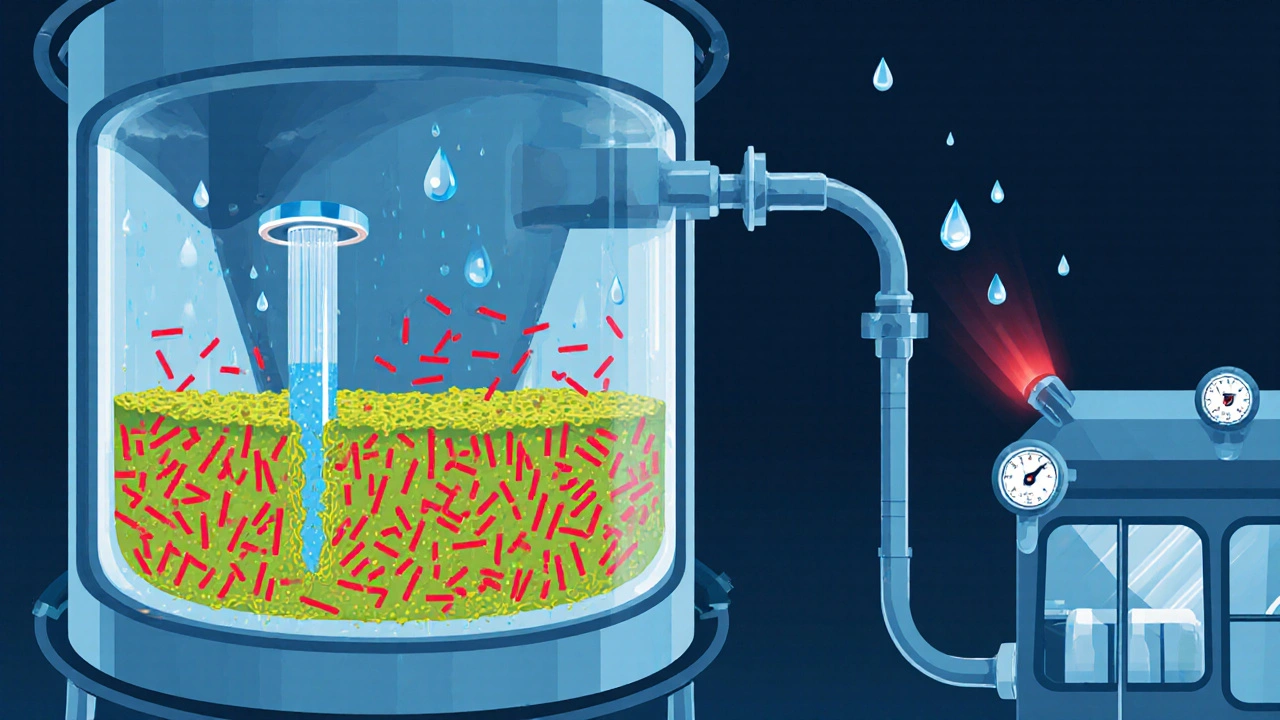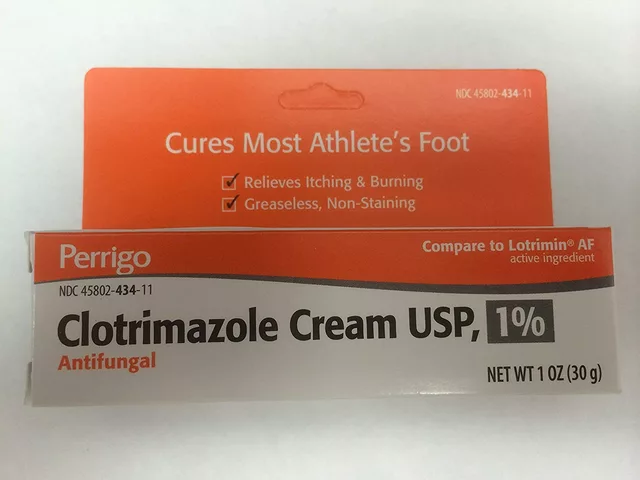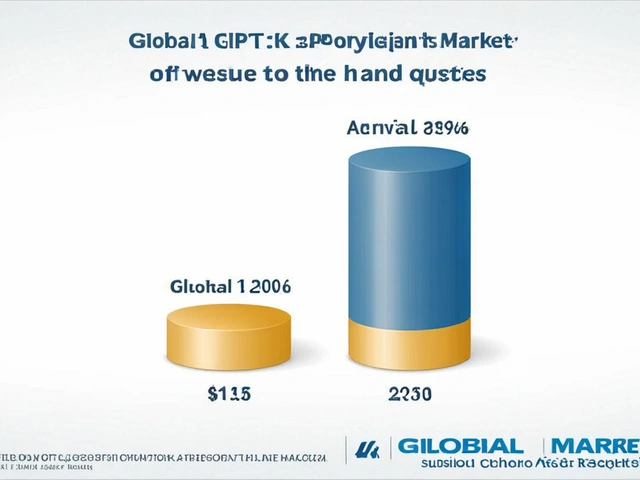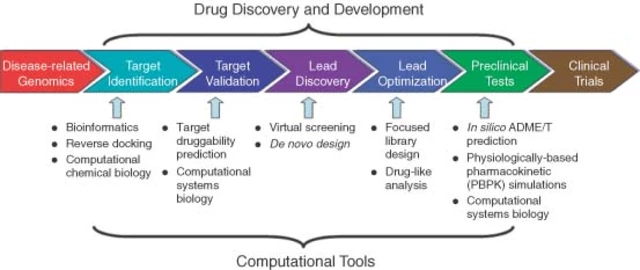Legionnaire's Disease Risk Assessment Tool
Risk Factors
Personalized Risk Assessment
Recommended Prevention Tips
Key Takeaways
- Legionnaire's disease is caused by inhaling aerosolized water contaminated with Legionella bacteria.
- Modern public transport systems can create the perfect environment for Legionella growth if water systems are poorly maintained.
- Regular cleaning, temperature control, and filtration are the most effective ways to keep the risk low.
- Symptoms appear 2‑10 days after exposure and include fever, cough, shortness of breath, and muscle aches.
- Early diagnosis and antibiotics lead to a full recovery in most cases.
When you step onto a bus, train or ferry, you rarely think about the water that runs through the air‑conditioning, showers or onboard bathrooms. Yet that hidden water can become a breeding ground for a dangerous bacterium. This guide explains what Legionnaire's disease is, why public transportation matters, and what commuters and operators can do to stay safe.
Legionnaire's disease is a severe form of pneumonia caused by inhaling microscopic droplets that contain the bacterium Legionella. The disease was first identified after an outbreak at an American Legion convention in 1976, which is how it got its name.
How Legionella Grows in Transport Environments
The bacterium thrives in warm, stagnant water (20‑45°C). In public transport, several components can meet those conditions:
- Air‑conditioning cooling towers that recycle water.
- Onboard showers and hand‑dryers in long‑distance coaches.
- Water tanks for restroom flushes and bottle‑refill stations.
- Humidifiers used to keep cabin air comfortable in dry climates.
When water isn’t regularly disinfected or filtered, Legionella forms a protective biofilm that resists standard cleaning. Aerosol‑generating devices then release tiny droplets (1‑5µm) that can travel deep into the lungs.
Public transportation
Because commuters are often in close quarters, a single contaminated system can affect dozens of passengers in a short period. The risk is higher during summer when cooling systems operate most intensively.

Who Is Most at Risk?
Anyone can catch Legionnaire's disease, but certain groups are more vulnerable:
- People over 50 years of age.
- Smokers and those with chronic lung disease.
- Individuals with weakened immune systems (e.g., diabetes, cancer patients).
- Workers who spend long hours inside vehicle cabins, such as bus drivers and train conductors.
In Australia, the Australian Government Department of Health reports an average of 15‑20 Legionella cases per year linked to transport, a figure that spikes after heavy rainfall when cooling towers are flushed.
Spotting the Symptoms Early
Symptoms typically appear 2‑10 days after exposure. The classic triad includes:
- High fever (often >38.5°C).
- Persistent cough, sometimes producing sputum.
- Shortness of breath or chest pain.
Other signs may include muscle aches, headache, confusion, and gastrointestinal upset. Because these symptoms mimic flu or COVID‑19, doctors rely on a detailed exposure history to raise suspicion of Legionella.
Diagnosis and Treatment
Laboratory confirmation comes from:
- Legionella urinary antigen test (quick, detects L. pneumophila serogroup1).
- Sputum culture (gold standard, takes 3‑5days).
- Polymerase chain reaction (PCR) assays for rapid detection.
Once diagnosed, the recommended antibiotics are a fluoroquinolone (e.g., levofloxacin) or a macrolide (e.g., azithromycin) for 10‑14days. Early treatment reduces mortality from 10‑15% to under 5%.
Treatment typically involves hospitalisation for monitoring, especially for high‑risk patients.

Preventive Measures for Commuters
While most maintenance falls to operators, travelers can take simple steps:
- Avoid sitting directly under air‑conditioning vents on hot days.
- If a vehicle has a visible water tank or shower, check for regular cleaning stickers.
- Report any unusual odors (musty, metallic) in cabins to the transport authority.
- Stay hydrated and wash hands frequently to reduce secondary infections.
Operator Guidelines and Best Practices
Transport agencies worldwide follow the CDC and World Health Organization recommendations. Core actions include:
- Maintain water temperature above 60°C or below 20°C to inhibit bacterial growth.
- Perform weekly disinfectant dosing (chlorine, monochloramine) and quarterly systematic flushing.
- Install point‑of‑use filters (0.2µm) on high‑risk outlets such as showerheads and humidifiers.
- Keep detailed water‑system logs and conduct annual risk assessments.
Below is a quick comparison of Legionella risk across three common transport modes:
| Transport Mode | Typical Water Source | Cooling/Heating System | Risk Level (Low/Medium/High) |
|---|---|---|---|
| City Bus | Onboard water tank for restrooms | Air‑conditioning with small evaporative coolers | Medium |
| Urban Train | Station‑based HVAC loops | Large central cooling towers | High |
| Ferry | Marine water‑treated systems | Engine‑room heat exchangers | Low |

What to Do If You Suspect an Outbreak
Public health authorities follow a clear protocol:
- Collect patient histories to identify common transport routes.
- Take environmental samples from suspected water sources.
- Issue a temporary service suspension if contamination is confirmed.
- Implement emergency flushing and hyperchlorination.
- Communicate openly with the public through alerts and media releases.
Passengers should seek medical care promptly if they develop fever and respiratory symptoms after a recent journey, especially if they belong to a high‑risk group.
Future Trends: Safer Transport Through Technology
Smart sensors that monitor water temperature and disinfectant levels in real time are being piloted in several Australian cities. Combined with AI‑driven predictive maintenance, these tools can flag potential Legionella growth before a single droplet is aerosolised.
Frequently Asked Questions
Can I get Legionnaire's disease from a single bus ride?
Yes, if the bus’s water system is contaminated and the air‑conditioning creates aerosol droplets, a short ride can be enough for exposure.
How long does Legionella survive in water?
The bacterium can persist for months in warm, stagnant water, especially if biofilm forms on pipe surfaces.
What is the incubation period?
Symptoms usually appear between 2 and 10 days after inhaling contaminated aerosols.
Are there any vaccines for Legionella?
No commercially available vaccine exists yet; prevention relies on water‑system management and personal hygiene.
What antibiotics are used?
Levofloxacin (a fluoroquinolone) or azithromycin (a macrolide) are the first‑line treatments, given for 10‑14 days.
By staying informed, reporting concerns, and supporting rigorous maintenance, both commuters and transport providers can keep Legionella at bay and enjoy safer journeys.











Bernard Lingcod October 14, 2025
Legionella isn’t just a hospital problem – those cramped bus restrooms can turn into perfect breeding grounds. If you’re on a city bus for over an hour in summer, the odds creep up, especially if the AC blows aerosolized water. Smoking or a weak immune system adds a few more points on the risk calculator.
Freddy Torres October 19, 2025
Quick take: stay clear of the vent spray on hot days – it’s a simple hack.
Andrew McKinnon October 23, 2025
Oh great, another commuter‑air‑conditioner cocktail. Nothing says ‘relaxing ride’ like inhaling a mist of warm, stagnant water.
Dean Gill October 27, 2025
Legionella thrives in warm, stagnant water that many transport vehicles inadvertently harbor.
The coolant systems of urban trains often circulate water at temperatures ideal for bacterial growth.
Buses with onboard restrooms store water in tanks that are rarely flushed unless a major incident occurs.
Ferries, while generally lower risk, can still develop biofilms in their engine‑room heat exchangers.
When the air‑conditioning blows over these water sources, microscopic droplets become airborne.
Passengers inhale these aerosols, providing a direct pathway for infection.
The risk calculator in the article assigns higher points for long journeys because exposure time accumulates.
Age and underlying health conditions, such as chronic lung disease, amplify the danger.
Smoking further compromises lung defenses, making even a brief exposure hazardous.
Seasonal factors matter; summer heat accelerates bacterial replication.
Climate‑controlled cabins without proper maintenance become breeding grounds.
Regular disinfection, flushing, and temperature monitoring can keep the bacterial load below harmful levels.
Transport authorities should publicize maintenance logs to build passenger trust.
Commuters can also protect themselves by avoiding direct vent airflow on hot days.
Reporting strange odors or visible mold in vehicle restrooms is a civic duty.
Ultimately, awareness and proactive hygiene are the best defenses against Legionnaires aboard public transport.
Royberto Spencer October 31, 2025
Public transport operators have an ethical duty to keep water systems clean; neglecting this is a slap in the face of vulnerable passengers.
Annette van Dijk-Leek November 4, 2025
Wow!!! This info is SO helpful!!!! Remember to report any weird smells!!! It could save lives!!!
Katherine M November 8, 2025
Esteemed readers, the data underscores the imperative of vigilant maintenance. Let us collectively advocate for routine system flushing and transparent reporting. Your health deserves no less. 😊
Bernard Leach November 13, 2025
Indeed the risk calculator flags long trips and warm climates as key variables it also reminds us that even short rides can matter if the water temperature hovers in the danger zone the expert panels suggest regular monitoring and passenger awareness can make a big diff
Shelby Larson November 17, 2025
Your point about ethical duty is spot on. Operators definitely need to recomnd systematic disinfection protocols. Failure to do so not only violates health standards but also defiantly ignore the wellbeing of at-risk riders.
Mark Eaton November 21, 2025
Heads up, folks: if you notice a musty odor on a train, sip some water and keep an eye on any feverish symptoms later. Early action can keep you out of the hospital.
Alfred Benton November 25, 2025
What they don’t tell you is that many of these water systems are quietly funded by shadowy backers who profit from inaction. The so‑called “regulations” are often just paper‑tigers, leaving us exposed.
Ivy Himnika November 29, 2025
Indeed, vigilance is paramount. Prompt reporting to transit authorities can trigger mandatory inspections and remedial actions. 📑
Nicole Tillman December 3, 2025
Balanced view: while the risk exists, it’s still relatively low for most commuters if operators follow WHO guidelines. Staying informed and speaking up when something feels off is the best personal strategy.
Sue Holten December 8, 2025
Sure, “balanced”-because ignoring a known health hazard is the perfect middle ground, right?
Tammie Foote December 12, 2025
Honestly, if you’re not checking the air vents, you’re basically inviting trouble. Just because it’s “low risk” doesn’t mean you can be lazy.
Jason Ring December 16, 2025
i think ur point is valid but maybe we should also look at other factors like humidity and vent design they can also play a big role